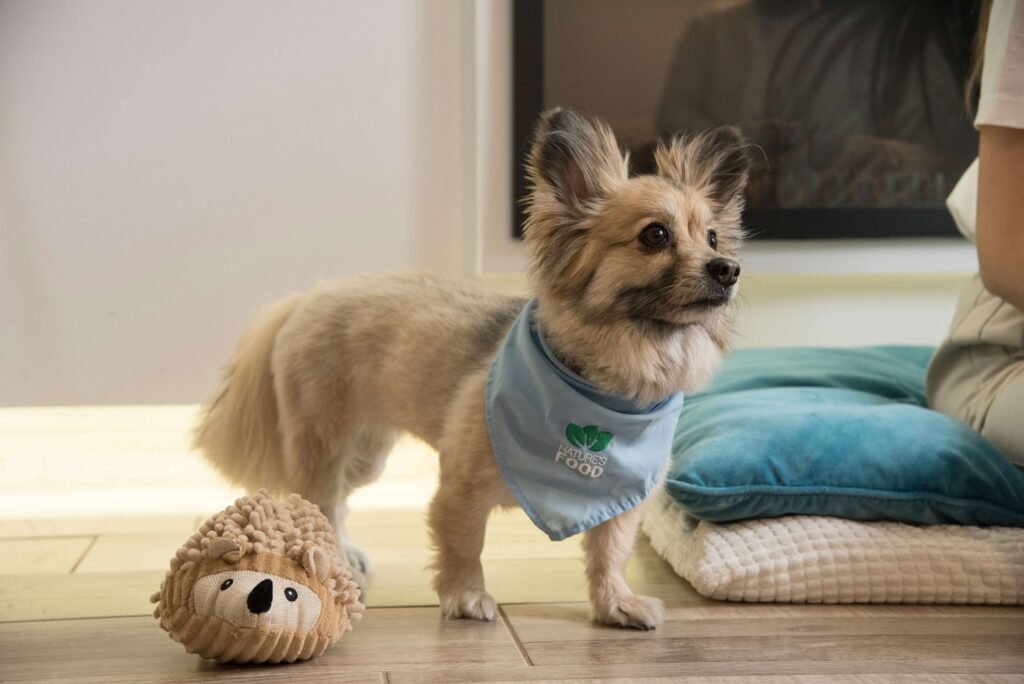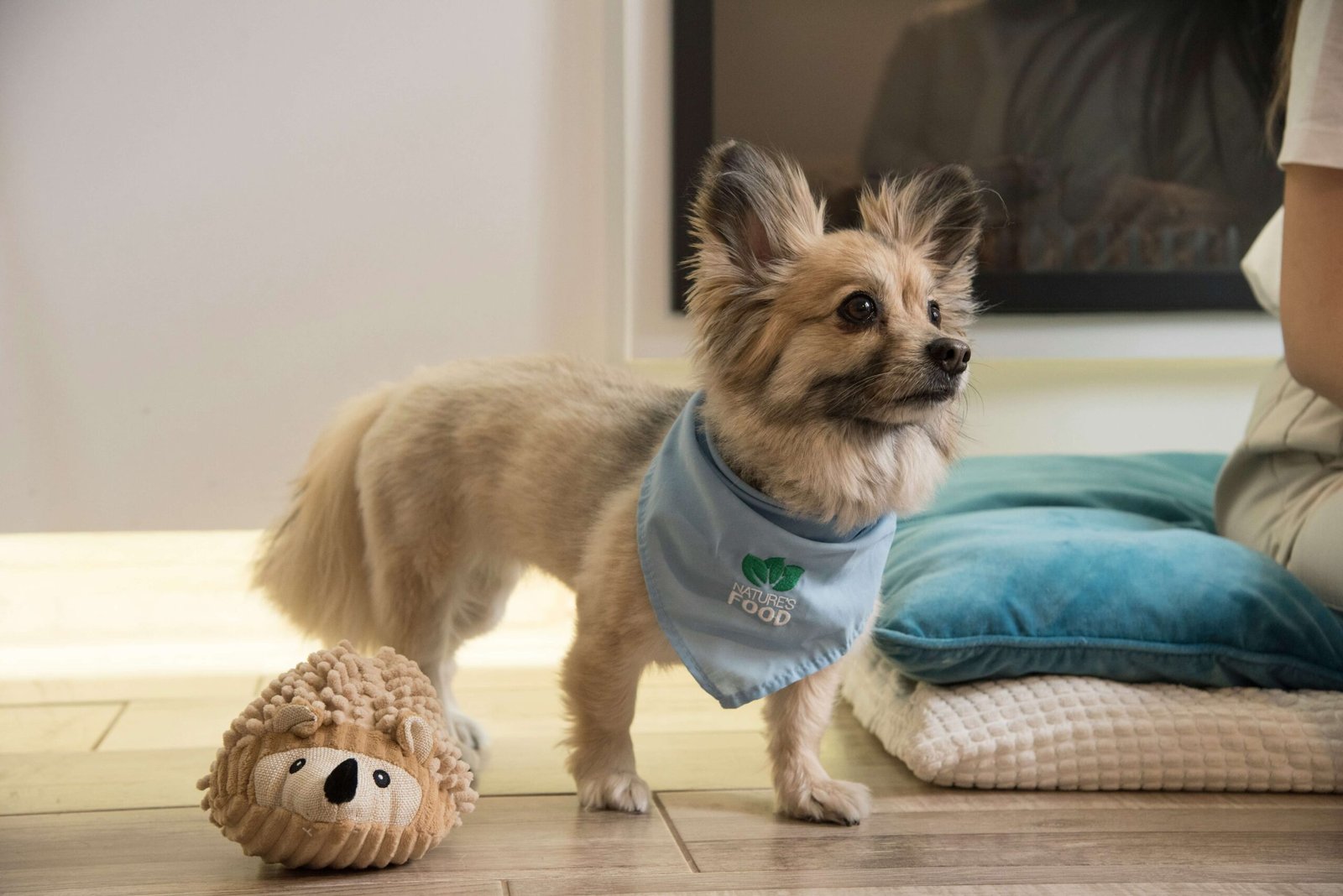Can I Put Vaseline on My Dogs Wound? What Every Pet Owner Should Know
As a loving pet owner, you naturally want to do everything you can to help your dog heal quickly and comfortably when they have a wound. But is it safe to use products like Vaseline on your dog’s injury? While Vaseline is a common household item often used for human skin care, its application on pets requires careful consideration. Understanding the potential risks and benefits is crucial to ensure your dog’s safety and well-being. In this blog post, we’ll explore whether Vaseline is appropriate for treating dog wounds, alternative solutions for wound care, and tips to promote faster healing. Let’s dive in and learn how to provide the best care for your furry friend!
Why Vaseline May Not Be Ideal for Dog Wounds
While Vaseline might seem like a convenient option for soothing or protecting your dog’s wound, it’s important to recognize why it may not be the best choice. Here are some reasons why Vaseline could pose risks when applied to your dog’s injury:
Not Absorbable by Skin
Vaseline creates a barrier on the skin but doesn’t absorb into tissues, which can trap moisture and potentially delay healing.Risk of Ingestion
Dogs frequently lick their wounds, and ingesting Vaseline can upset their stomach or cause digestive issues.Potential Allergic Reactions
Some dogs may have sensitivities or allergies to petroleum-based products like Vaseline, leading to irritation or inflammation.Ineffective Against Infection
Vaseline does not have antibacterial properties, meaning it won’t protect your dog’s wound from infection.Can Trap Debris
The thick consistency of Vaseline can attract dirt, hair, and other particles, increasing the risk of contamination.
Understanding these concerns highlights the importance of choosing safer alternatives for treating your dog’s wounds. Always prioritize products specifically designed for pets to avoid complications.
Safe Alternatives to Vaseline for Dog Wound Care
When caring for your dog’s wound, it’s essential to use products that are safe, effective, and formulated for animals. Here are some veterinarian-approved alternatives to Vaseline that can aid in your dog’s healing process:
Pet-Specific Wound Ointments
Look for ointments labeled as safe for pets, such as those containing ingredients like silver sulfadiazine or chlorhexidine.Aloe Vera Gel (Pet-Safe)
Pure, pet-safe aloe vera gel can soothe minor cuts and abrasions without irritating your dog’s skin.Coconut Oil (Unrefined and Organic)
This natural oil has mild antimicrobial properties and can be used sparingly on superficial wounds after consulting your vet.Hydrogen Peroxide (For Cleaning Only)
Diluted hydrogen peroxide can clean the wound initially, but avoid using it repeatedly as it may damage healthy tissue.Saline Solution
A sterile saline solution is gentle and effective for cleaning wounds without causing further irritation.
These alternatives provide safer options for addressing your dog’s injuries while minimizing the risk of adverse reactions. Always consult your veterinarian before applying any product to ensure it’s appropriate for your dog’s specific condition.
Check this guide 👉Guide to Dog Wound Care: Best 7 Expert Tips!
Check this guide 👉Why Dog Bite Wounds Are Not Sutured: Best 7 Health Tips!

Vaseline | Pet-Safe Alternatives |
|---|---|
Petroleum-based, traps moisture | Formulated specifically for animal skin |
No antibacterial properties | Contains ingredients to prevent infection |
Risk of ingestion and digestion issues | Safe if licked, non-toxic to pets |
Potential to irritate sensitive skin | Designed to soothe and promote healing |
Attracts debris and contaminants | Keeps wounds clean and protected |
Signs Your Dog’s Wound Needs Veterinary Attention
While minor wounds can often be treated at home, some injuries require professional care to prevent complications. Knowing when to seek veterinary attention ensures your dog receives the treatment they need. Here are signs that indicate your dog’s wound may need medical intervention:
Excessive Bleeding
If the wound continues to bleed heavily after applying pressure for several minutes, it may require stitches or advanced care.Signs of Infection
Redness, swelling, pus, or a foul odor around the wound are clear indicators of infection.Deep Lacerations
Wounds that penetrate deep into the skin or expose underlying tissues should always be evaluated by a vet.Limping or Difficulty Moving
If the injury affects your dog’s mobility, it could indicate damage to muscles, tendons, or bones.Behavioral Changes
Lethargy, loss of appetite, or unusual aggression may signal pain or systemic issues caused by the wound.
Recognizing these warning signs allows you to act promptly and avoid further complications. When in doubt, err on the side of caution and consult your veterinarian.
Tips for Safely Caring for Your Dog’s Wound at Home
Proper wound care is essential for ensuring your dog heals quickly and avoids complications. By following these tips, you can create a safe and supportive environment for recovery:
Clean the Area Gently
Use a sterile saline solution or pet-safe antiseptic to clean the wound without causing irritation.Prevent Licking and Chewing
Use an Elizabethan collar (cone) or bitter sprays to discourage your dog from licking or chewing the wound.Keep the Wound Dry
Avoid exposing the wound to water during baths or outdoor activities until it has healed sufficiently.Monitor for Healing Progress
Check the wound daily for signs of improvement or worsening, such as reduced redness or increased swelling.Follow Up with Your Vet
Even if the wound seems minor, schedule a follow-up appointment to ensure proper healing and address any concerns.
By adhering to these guidelines, you’ll help your dog recover more comfortably and reduce the risk of infection or other complications. A little extra care goes a long way!
Common Mistakes to Avoid When Treating Dog Wounds
Even with the best intentions, pet owners can make mistakes when caring for their dog’s wounds. These errors can delay healing or even worsen the injury. By being aware of common pitfalls, you can ensure your dog receives the care they need. Here are some mistakes to avoid:
Using Human Medications Without Guidance
Applying over-the-counter creams like cortisone or antibiotic ointments intended for humans can irritate your dog’s skin or cause adverse reactions.Over-Cleaning the Wound
Frequent cleaning with harsh chemicals or antiseptics can damage healthy tissue and slow down the healing process.Ignoring Signs of Infection
Assuming a wound will heal on its own without monitoring for redness, swelling, or discharge can lead to serious complications.Skipping Protection Measures
Failing to use an Elizabethan collar or deterrent sprays may result in your dog reopening the wound by licking or chewing.Delaying Veterinary Care
Waiting too long to consult a vet for a serious wound can lead to infections or other health issues that could have been avoided.
Avoiding these mistakes ensures your dog’s wound heals properly and reduces the risk of further complications. Always prioritize professional advice when in doubt.
How to Prevent Wounds in Dogs
Prevention is always better than cure when it comes to keeping your dog safe from injuries. By taking proactive measures, you can minimize the chances of your dog getting hurt. Here are some practical tips to prevent wounds:
Supervise Outdoor Activities
Keep an eye on your dog during playtime or walks to ensure they don’t encounter sharp objects or hazardous terrain.Trim Nails Regularly
Overgrown nails can snag on surfaces, causing tears or injuries to your dog’s paws.Inspect Your Home for Hazards
Remove sharp edges, exposed wires, or small objects that your dog might chew on or step on accidentally.Use Proper Gear During Walks
Ensure your dog wears a well-fitted harness or collar to prevent them from escaping or getting tangled.Socialize Your Dog Safely
Introduce your dog to other animals in controlled environments to reduce the risk of fights or bites.
By implementing these preventive measures, you’ll create a safer environment for your dog and reduce the likelihood of injuries. A little extra caution can go a long way in protecting your furry friend.
Natural Remedies to Support Wound Healing
While veterinary care is essential for serious wounds, some natural remedies can complement traditional treatments and promote faster healing. These options should only be used under the guidance of your vet. Here are some natural remedies worth considering:
Manuka Honey (Pet-Safe)
Known for its antibacterial properties, Manuka honey can be applied sparingly to minor wounds to support healing.Chamomile Tea Compress
A cooled chamomile tea compress can soothe irritated skin and reduce inflammation around the wound.Calendula Ointment
This herbal ointment has anti-inflammatory and antimicrobial properties, making it a gentle option for superficial wounds.Turmeric Paste
A paste made from turmeric powder and water has mild antibacterial effects but should only be used on external wounds.Apple Cider Vinegar (Diluted)
When diluted with water, apple cider vinegar can clean minor wounds and deter pests, though it should never be used on open or deep cuts.
These natural remedies can provide additional support for your dog’s healing process, but they should never replace professional care. Always consult your veterinarian before trying any new treatment to ensure it’s safe for your dog’s specific needs.
Frequently Asked Questions About Dog Wound Care
Can I put Neosporin on my dog’s wound?
While Neosporin isn’t toxic, it’s not ideal because dogs may lick it off. Opt for pet-specific ointments instead.
How often should I clean my dog’s wound?
Clean the wound 1–2 times daily with a sterile saline solution or as directed by your veterinarian.
Is it normal for my dog’s wound to scab over?
Yes, scabbing is part of the healing process, but monitor for excessive scabbing or signs of infection.
What should I do if my dog won’t stop licking their wound?
Use an Elizabethan collar or deterrent sprays to prevent licking and protect the wound.
Can I use hydrogen peroxide on my dog’s wound?
Hydrogen peroxide can be used once to clean a fresh wound, but avoid repeated use as it may damage healthy tissue.
Prioritize Your Dog’s Health and Safety
When it comes to treating your dog’s wound, it’s crucial to prioritize their health and safety above all else. While Vaseline might seem convenient, it’s not the best option for wound care due to its potential risks and lack of effectiveness. Instead, opt for pet-safe alternatives and follow proper wound care practices to support your dog’s healing journey. Remember, even minor injuries can escalate without proper attention, so don’t hesitate to consult your veterinarian if you’re unsure. By staying informed and proactive, you’ll ensure your furry companion recovers quickly and comfortably. After all, their well-being is worth every ounce of care and effort!
Canned Pumpkin for Cat Diarrhea: Best 7 Expert Tips! Natural remedy to firm stools, soothe upset bellies, and support gut health safely.
Can a Cat Give You Scabies? Best 7 Expert Tips! Discover the truth about feline mites, human skin risks, and how to protect yourself—without panic.
Cat Flea vs Human Flea: Best 7 Expert Tips! Discover the truth about bites, species, and how to eliminate infestations for good.
Weird Cat Behaviors: Best 7 Expert Tips! Discover why cats do strange things—and how to understand, not punish, their instincts for a happier home.





